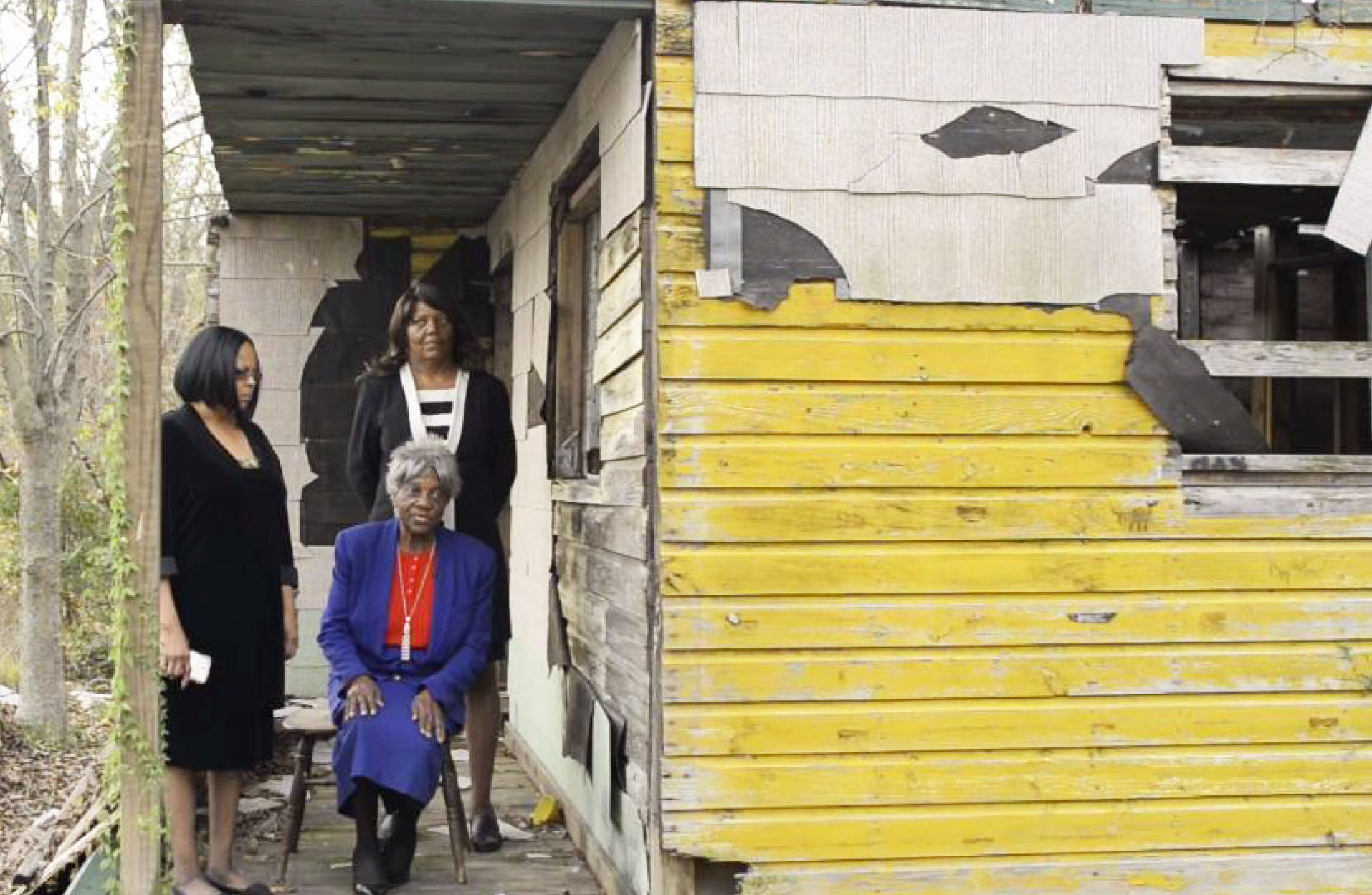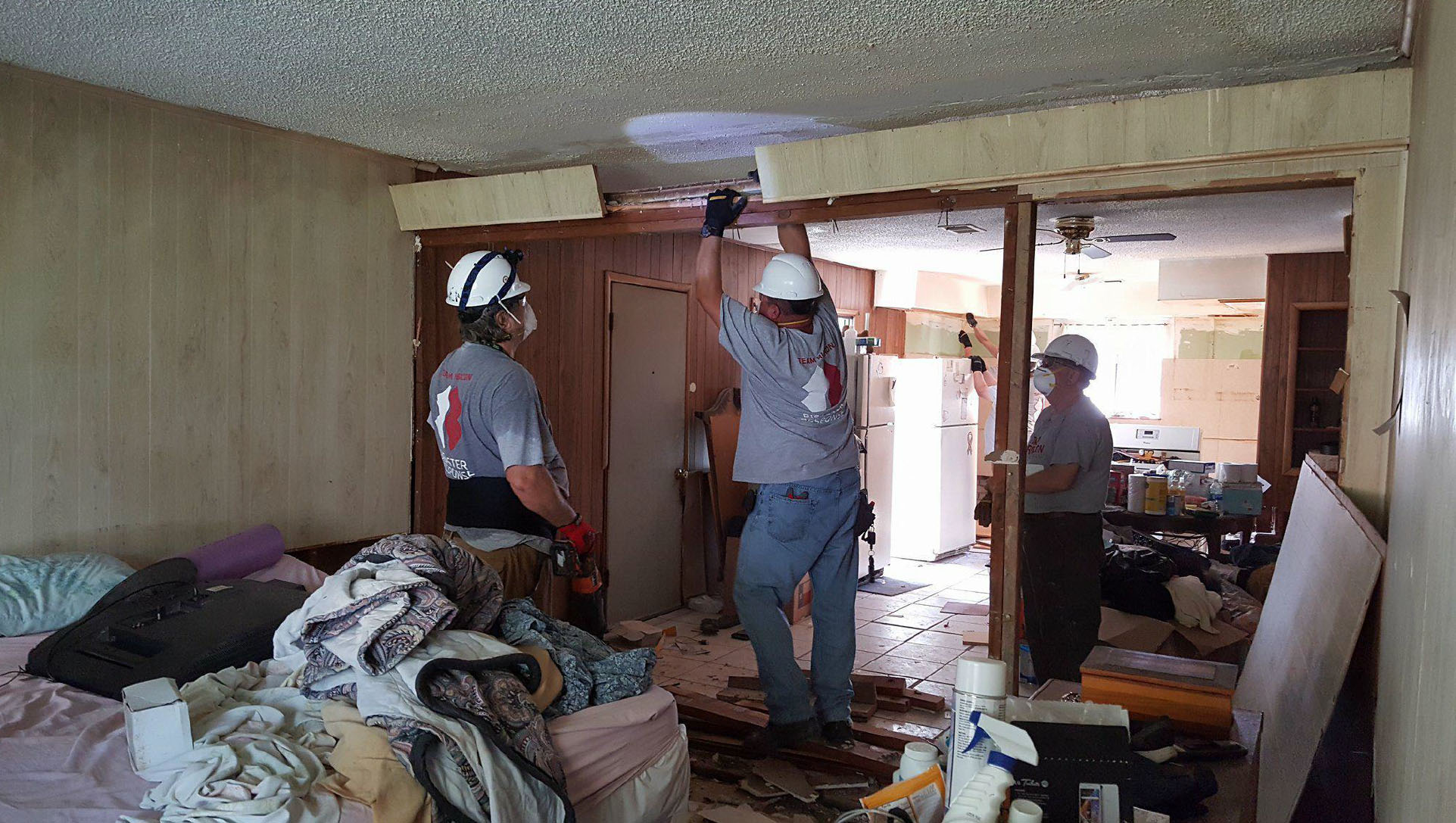Seniors seeking housing, health, and climate justice in the Gulf Coast, North America
Introduction
Hurricane Harvey hit Houston, Texas during Hurricane season, August 2017, and left behind compounded devastation in the neighborhoods historically the most impacted by natural disasters and environmental injustice. In the city limits, Harvey damaged 148,413 single family homes primarily through flooding. Of those homes, 53% (78,659 households) were earning at or below 80% of the area median income for Houston and Texas. (HCD 2019) Families without savings, and seniors on fixed incomes, without home and flood insurance, were left teetering on the brink of permanent homelessness, threatening their life-long investment and quality of life. The post-disaster landscape uniquely burdens African American seniors who are aging in place, in neighborhoods that have been historically segregated, disinvested, and reterritorialized through gentrification.
In Houston and other major cities, the post-disaster milieu reveals that seniors are hit the hardest by the challenges of sheltering in place, navigating temporary housing, protecting health, maintaining homeownership, repairing damage from reoccurring mega-storms and supporting their families as matriarchs and patriarchs. Currently, federal and local home repair programs have been insufficient in addressing these vulnerable populations. As of 2019, the City of Houston repair program had only partially repaired or reimbursed 9 single family homes. (2019)

Temporary senior housing post Harvey (2017). A senior married couple sets up a tent and temporary living space under their carport.
A large disparity exists between the number of homes still in need of repair after Harvey and the number of homes actually repaired by the City of Houston, Housing and Community Development, two-years after the storm. Of the 20,589 homeowners who registered for assistance, 70% were non-white and due in part to the slow reputation only 14% of low income households (80% below AMI) that were flooded even reached out to the City for assistance. (2019) Of the 11,724 low-income households that reached out, 57% were seniors.
Through the lens of environmental justice, climate change impacts must be viewed over extended periods of time and the vulnerability of neighborhoods already exposed to environmental injustice need special consideration. The post-disaster landscape of housing recovery is a uniquely positioned triangulation of data, resources and opportunity to support the rebirth of livable neighborhoods for seniors aging in place and their families, given resources are allocated toward housing in an equitable and resilient way. However as of 2020, the City of Houston reportedly had only helped only 15 homeowners of various economic backgrounds and, as a result, the federal government shifted control of 1.27 billion in federal funding to the State of Texas, a clear sign something is not working. In a 2020 City of Houston report, 37,000 Houstonians were relocated to shelters as a result of Harvey damages to single family homes.
Related: How to get involved with disaster assistance
Oral histories
To address the environmental justice issues surrounding disaster recovery programs and aid, just planning suggests policy makers must include senior stakeholders at the table. Although in Houston, African American homeowners living in historically segregated neighborhoods have been left out or placated, this research seeks to find the wisdom embedded in their local and historical knowledge of place, climate and neighborhood ecology through their own oral histories post-Harvey.

Undergraduate architecture students in the author’s Design Studio course help interview homeowners post Harvey. (left to right; Shelby Skinner, Mrs. O, Cynthia Harris)
Resident reflections on climate gentrification during oral history interviews by myself and my undergraduate architecture students at Prairie View A&M University inform the design process and offer a first hand account of the damage caused. “It saddens me, because this is my life, this has been my life, and for the buildings to go down, you are tearing down my memories, they are all gone,” one senior, 82, told students in one of the first interviews (interview with senior, 2015). After Hurricane Harvey, another senior, 86, reflects on the increased pressure from people wanting to buy her home no matter what shape it is in:
“I asked them, did you see a for sale sign out front? I get letters all the time. People wanting to buy the house. If I sell my house, what am I going to do? I’ve got to live somewhere. I’ll have to pay rent to somebody else, so why should I sell my house when I own it and move somewhere else? Hell no.. I’ll be right here till Jesus comes.” (interview with senior, 2019)
Another homeowner, Ms. Wilkerson, 77, sits on the front porch of a worn, wood clad structure that she has been court ordered to tear down post-Harvey and recalls when her father built the Fifth Ward home. Less than eighty feet away, a train pulls slowly by. Loud metal sounds grind and screech, interrupting the interview. We move inside to the front home, the newer one, built when she was 14. This is the slab on grade home that Harvey destroyed. We set back up in the gutted belly of the whale. Once the kitchen area, we can now see through the stud wall to the bathroom and bedroom beyond. She finishes the oral history, “Harvey was a little scary to me, because I had experienced floods before, but nothing like Harvey. It never stopped raining, the water never stopped coming in the house. The next morning when we all awoke, we stepped in water” (Wilkerson 2017). She describes not being able to reach the convention center, living with mold post-Ike, being grateful for volunteers and incremental aid received throughout the years after other storms. Students map the evacuation driving routes from Ms. Wilkerson’s home to two different municipal shelters and one private shelter that were offered. Road flooding prevented her and her family from leaving their home. She mourns the loss of her brother, a veteran who was receiving in-home care, who died two months after the storm. She describes the history and significance of the place. We learn that environmental injustice existed from the time her father built the original home:
Related: What wind and water can do to a building
“We moved here in 1947, I was 7 years old at the time. It was only four rooms to the house. We had the experience of burning wood. We used, what you call, relief stations outside the home. We didn’t have sewage at that time. We only had lights. We didn’t have but one wall to the house and facing the north we felt much coldness, in the winter and plenty (of) heat in the summer.” (Wilkerson 2017)

Ms. Wilkerson and her daughters (also seniors), shown on the porch of an existing accessory dwelling unit the City has ordered them to demolish.
Herein lies the truth architects hold close, impacts from natural disasters and mega-storms exacerbate and reveal gaps in our infrastructure, built environments and social systems. This is recognized in communities of color, who have been income deprived and lack access to resources. This research wasn’t just born out of the Harvey event, or the previous Hurricane Ike, Katrina, or any other tropical storm in the past 100 years. It emerged out of a ubiquitous need for affordable housing, and an acknowledgement that non-white senior homeowners are at risk of declining health and homelessness post disaster.
This research asks and uncovers: What is the true extent of home damage that seniors experience? In what ways does the period post storm immediately impact senior health? How do seniors recover from a mega-storm, what does that recovery period look like? How can housing recovery be viewed in the context of environmental justice? How can an environmental justice overlay position neighborhoods that have been historically exposed to systemic racism, receive equitable funding to rebuild and maintain land and homeownership?
Conclusion

A home health care senior room post Harvey (2017) as volunteers begin demolition of interior water damaged walls. The homeowner and her brother, both seniors, were exposed to high levels of mold in the home after the storm. The brother passed away before this photo was taken, just one month after the storm.
African American and non-white seniors are overwhelmingly exposed to poor indoor air quality as a result of storm damage, mold, inadequate or lacking air conditioning. Slow repairs resulting in uninhabitable spaces leave seniors at risk of otherwise preventable health deterioration and permanent homelessness. To establish a more effective and equitable aid policy, vulnerability should be established immediately through both indoor air quality samples and a geographic environmental justice overlay. Additionally, the repair and rebuild standard must be set to address the structural and environmental impacts of future storms through resilient design. Home repair aid must include green building standards with an emphasis on indoor air quality and aging in place.
This research seeks to propose policy recommendations for accessory dwelling housing in affected neighborhoods that would reduce displacement immediately after the storm and provide a permanent shelter on site for seniors embarking in the repair of their main homes.
April Ward, EDAC is an Assistant Professor of Architecture at Prairie View A&M University. She received a 2019-2020 DFA Design for Seniors Fellowship for her hurricane Harvey recovery work as Director for Living Paradigm CDC.
The Design for Aging Fellowship program offers grants to students and young professionals in architecture or aging focused program to increase their awareness of the needs and nature of aging in place.
Images
All images courtesy of the author.